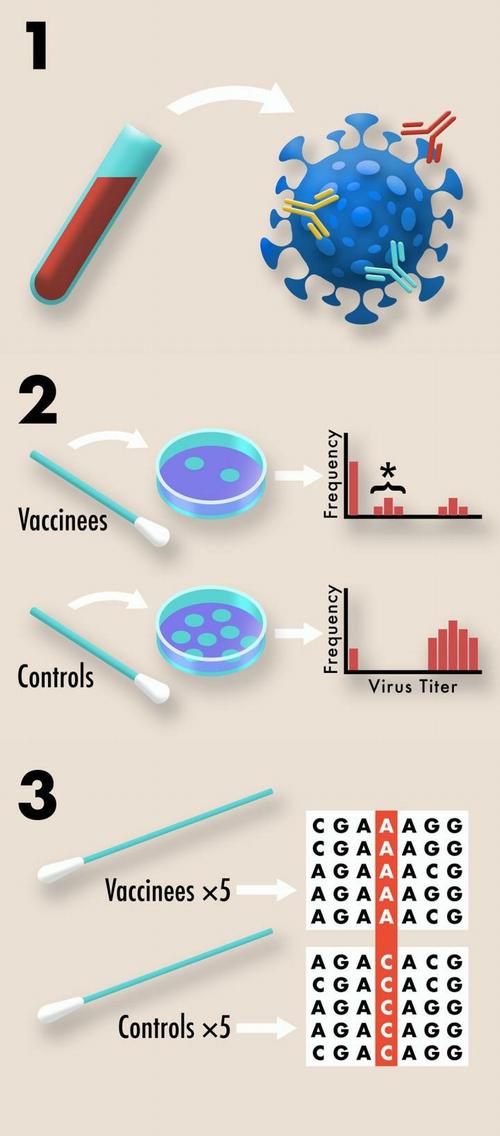Yet by the time government, which will now want to be involved more than ever, gets any vaccine into the hands of people, the virus may have mutated. Like a flu vaccine, instead of having this go away, scientists may have to deduce what mutations will occur and create an annual vaccine based on that - because SARS-CoV-2 may develop resistance.
The authors of a new paper suggest that the standard blood and nasal-swab samples taken during clinical trials to quantify individuals' responses to vaccination may also be used to assess the likelihood that the vaccines being tested will drive resistance evolution. For example, the team proposes that blood samples can be used to assess the redundancy of immune protection generated by candidate vaccines by measuring the types and amounts of antibodies and T-cells that are present.

Schematic illustrating three ways that standard samples from COVID-19 clinical trials can be repurposed to assess the risk that vaccine resistance will evolve. 1. The complexity of B-cell and T-cell responses can be measured using blood samples. Different neutralizing antibodies are depicted above in different colors. More complex responses indicate more evolutionarily robust immunity. 2. The effect of vaccination on transmission potential can be assessed by collecting viral titer data using routine nasal swabs. Plaque assays from multiple vaccinated and control individuals are compiled into a histogram. Undetectable viral titers suggest little or no transmission potential, due to either complete immune protection or the absence of exposure. High viral titers suggest high transmission potential due to the absence of a protective immune response. Intermediate viral titers, marked above with an asterisk, suggest moderate transmission potential due to partial vaccine protection. Intermediate titers indicate an increased risk for resistance evolution since pathogen diversity can be generated within hosts and selection can act during transmission between hosts. 3. Pre-existing variation for vaccine resistance can be assessed by recovering genome sequences from nasopharyngeal swabs of symptomatic COVID-19 cases included in the study. In a placebo controlled, double blind study, any significant differences in the genome sequences of samples from vaccinated and control individuals would suggest at least partial vaccine resistance. Image: Kennedy et al, 2020 (PLOS Biology, CC BY 4.0)
"Much like how combination antibiotic therapy delays the evolution of antibiotic resistance, vaccines that are designed to induce a redundant immune response -- or one in which the immune system is encouraged to target multiple sites, called epitopes -- on the virus's surface, can delay the evolution of vaccine resistance," said Andrew Read, Professor of Biology and Entomology at Pennsylvania State University. "That's because the virus would have to acquire several mutations, as opposed to just one, in order to survive the host immune system's attack."
The researchers also recommend that nasal swabs typically collected during clinical trials may be used to determine the viral titer, or amount of virus present, which can be considered a proxy for transmission potential. They noted that strongly suppressing virus transmission through vaccinated hosts is key to slowing the evolution of resistance, since it minimizes opportunities for mutations to arise and reduces opportunities for natural selection to act on those mutations that do arise.
In addition, the team suggests that the genetic data acquired through nasal swabs can be used to examine whether vaccine-driven selection has occurred. For example, differences in alleles, or forms of genes that arise from mutations, between the viral genomes collected from vaccinated versus unvaccinated individuals would indicate that selection has taken place.






Comments